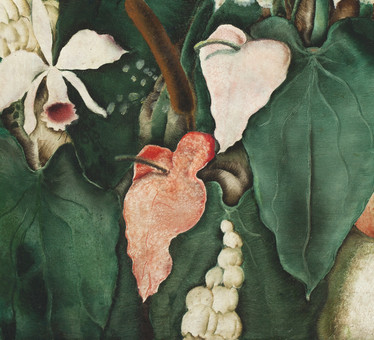Vicente do Rego Monteiro

Recife, Brazil, 1899 —
Recife, Brazil, 1970
The work of Recife painter and poet Vicente do Rego Monteiro is evidence of the territorial scope reached by Brazilian modernism, whose effervescence is manifested far beyond the salons of São Paulo. A swallower even before the enunciation of anthropophagy, Monteiro seeks Brazil together with the indigenous people not only in their legends and myths, but above all in a unique and advanced artistic form that brings the primitive closer to the modern and changes the poles of separation between the savage and the civilized. .
Raised in the Paris of the Belle Époque, in the midst of the avant-garde turmoil that turned the art world around, Monteiro reveals in his painting a distinct porosity to the most different influences. In an initial work such as the watercolor O Nascimento de Mani (1921), already full of the indigenist theme that constitutes an endless repository of inspiration for his entire production, the painter from Pernambuco lets us see, in the representation of a legendary scene, using himself with great care Synthetic formal and outline with stylized lines, a strong influence from Egyptian, Hindu and Japanese art. In other paintings, such as Mulher Fante do Espelho (1922) and the series The world that the cafeteria created, from the 40s, the use of cubism is clear, while in Diana (1929), Monteiro resorts to surrealism
However, what makes Monteiro an original painter in the fullness of the term are his works worked with a very particular style, which emerges from the union of Cubism and Art Deco with the primitive art found in Marajoara ceramics. From this amalgamation of modern and ancestral, a pictorial language expressed in paintings in ocher and earthy tones, such as The Crucifixion (1922) and Indigenous Maternity (1924), composed of gigantic, synthetic and rigid figures, schematized by geometric precision and endowed with a strong tactile effect, as if the contours of the figure were not painted, but sculpted in relief, impelling the primitive Brazilian to optically launch himself out of the canvas and become contemporary with the modern.
VRP